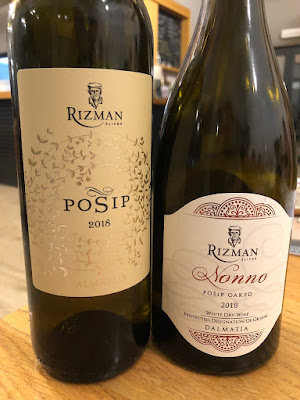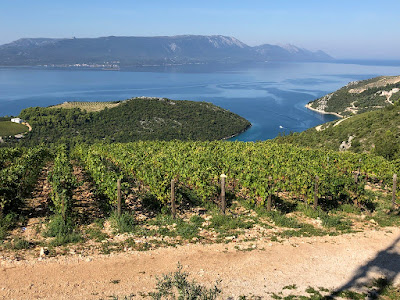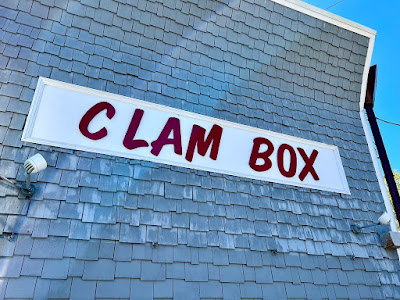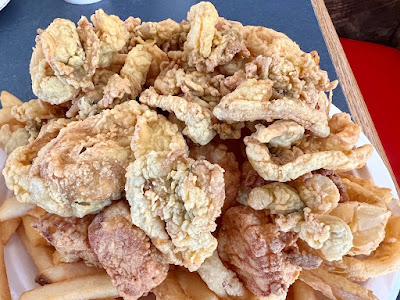--A Traveler’s History of Croatia (2nd ed) by Benjamin Curtis
From the eastern shores of Italy, if you travel across the Adriatic Sea (known to Croatians as Jadransko More), a gateway to the Mediterranean Sea, you'll encounter the Republic of Croatia. You could also follow the roads along the northern coast of Italy to the east, crossing Slovenia and then into Croatia. Croatia is alternatively known as a Balkan country or a Central European country, dependent on how one wants to depict the context of the country. In July 2013, Croatia became a part of the European Union.
Croatia has a land area that's roughly equivalent to the size of West Virginia, a population of about 4 million, and 90% of that population identifies as ethnic Croats. It's estimated that over 4 million Croats live outside of Croatia, in countries all over the world, from New Zealand to the Chile, with over 400,000 living in the U.S.
With a mainland coastline of about 1100 miles, Croatia also possesses over 1,200 islands in the Adriatic Sea, about 50 of them which are inhabited. Some of the most famous islands include Hvar, Vis, Ran, Korcula, Brac, Mljet, Cres, Bag, and Losinj. The famed Mali Ston oysters, a type of European flat oyster, comes from the Mali Ston Bay in the Adriatic, and they are amazing, possessed of a unique merroir and taste. The Adriatic Sea is vitally important to Croatia, and has been so for many centuries, especially for mercantile purposes. In addition, the Adriatic and is an important reason for its popularity with tourists, who revel in the gorgeous beaches of Dalmatia and the the various islands.
The history of Croatia extends back thousands of years, with the Illyrians being one of the first most noticeable civilizations, even though little is still know of them. However the names of a few of their tribes eventually became used for various Croatian regions. For example, the Histri tribe inspired the name Istria and the Delmati tribe inspired the name of Dalmatia.
The history of Croatia extends back thousands of years, with the Illyrians being one of the first most noticeable civilizations, even though little is still know of them. However the names of a few of their tribes eventually became used for various Croatian regions. For example, the Histri tribe inspired the name Istria and the Delmati tribe inspired the name of Dalmatia.
The ancient Greeks traveled across the Adriatic Sea at least as far back as the 7th century B.C., although their first known colony, on the island of Vis, wasn't established until the 5th century B.C. Today, there are few Greek ruins in Croatia, although evidence of their presence has been found.
By the 2nd century BC, the Romans started taking control of Croatia. Illyrian pirates had been harassing merchants in the Adriatic for years and that is one of the major reasons why the Romans got involved, to thwart that shipping threat. Today, there are numerous Roman ruins, some well-preserved, spread across the country, from Diocletian's Palace in Split to the Pula Arena in Pula, one of the largest surviving Roman arenas. On my prior trip, I got to visit some Roman ruins, and I should do so again on this new trip, including the Pula Arena.
A number of Slav tribes began settling in the Balkan peninsula during the 6th-7th centuries but the Croats were the first to break free from Byzantine rule and establish their own kingdom, led by King Tomislav, around 924. About 165 years later, when the last Tomislav king passed away, the country fell under the dominance of Hungary.
Throughout the centuries, the lands of Croatia would often be immersed in war, being seized and controlled by various factions, including the Byzantine Empire, the Croatian Kingdom, the Republic of Venice, the Habsburg Monarchy and the Ottoman Empire. Each faction left their impact on Croatia, and those roots are apparent in the modern day.
Around 1918, Croatia was absorbed into what would soon become the nation of Yugoslavia. It took over seventy years, on June 25, 1991, before Croatia declared its independence, leading to a war, the Homeland War, that ended, fortunately, in Croatia's favor, around August 1995. During the last 27 years, Croatia has maintained its independence, and eventually joined the European Union.
“Those who seek paradise on Earth should come to Dubrovnik.”
--George Bernard Shaw
Croatia now borders the countries of Slovenia, Hungary, Serbia, Bosnia & Herzegovina, and Montenegro. Bosnia & Herzegovina actually splits Croatia, at a section known as the Neum Corridor, an oddity that extends back to a treaty in 1699. It is only about 9 kilometers long, giving Bosnia & Herzegovina a tiny coastline. However, the new Pelješac Bridge, which is set to open in July, will allow people to bypass the Neum Corridor, with no need to cross into Bosnia & Herzegovina. This was a massive undertaking, and a Chinese company is largely responsible for its construction.
Croatia joined the European Union in July 2013 and though some consider Croatia a small country, it's actually larger than a number of other EU countries, including Belgium, Cyprus, Denmark, Estonia, Luxembourg, Malta, Netherlands, Slovakia and Slovenia. Next year, Croatia will abandon the kuna, their current currency, and adopt the Euro. Kuna is also the name of the pine-marten, part of the weasel family, and its image is on several kuna coins. The design for the new Croatian 1 Euro coin was recently selected, and it will use an image of the pine-marten.
“Those who seek paradise on Earth should come to Dubrovnik.”
--George Bernard Shaw
Croatia now borders the countries of Slovenia, Hungary, Serbia, Bosnia & Herzegovina, and Montenegro. Bosnia & Herzegovina actually splits Croatia, at a section known as the Neum Corridor, an oddity that extends back to a treaty in 1699. It is only about 9 kilometers long, giving Bosnia & Herzegovina a tiny coastline. However, the new Pelješac Bridge, which is set to open in July, will allow people to bypass the Neum Corridor, with no need to cross into Bosnia & Herzegovina. This was a massive undertaking, and a Chinese company is largely responsible for its construction.
Croatia joined the European Union in July 2013 and though some consider Croatia a small country, it's actually larger than a number of other EU countries, including Belgium, Cyprus, Denmark, Estonia, Luxembourg, Malta, Netherlands, Slovakia and Slovenia. Next year, Croatia will abandon the kuna, their current currency, and adopt the Euro. Kuna is also the name of the pine-marten, part of the weasel family, and its image is on several kuna coins. The design for the new Croatian 1 Euro coin was recently selected, and it will use an image of the pine-marten.
Culturally, Croatia can roughly be divided into three main areas, a bit of a simplification, and each region is reflective of its neighbors. The most eastern area, generally composed of Slavonia, is close to Hungry and Serbia, and is more similar to Hungarian and Slavic cuisine and culture. The more coastal and southern area of Dalmatia, is more Mediterranean in nature while the region of Istria, to the northwest, is more Italian in nature. Great diversity in this relatively small country.
The history of wine in Croatia extends back over 2500 years, with the Greeks and Romans responsible for much of the early viticulture. However, the native Illyrians already engaged in winemaking prior to the arrival of the Greek and Romans. The Roman Poet Lucan penned a poem that praised the Illyrians’ winemaking expertise.
There's a Greek coin from the island of Vis, dated from the 5th century B.C., which depicts a bunch of grapes on one side and an amphora on the reverse side. The Stari Grad Plain, on the island of Hvar, was colonized by Greeks during the 4th century B.C. Vineyards have been continuously planted there for over 2400 consecutive years and it's now a UNESCO World Heritage site!
Around 200 A.D. Athenaeus of Naucratis. a Greek teacher and write, composed The Deipnosophistae, which means "dinner-table philosophers," and touched on many matters of food and wine. One quote stated, "In Issa, moreover, an island in the Adriatic, Agatharchides says a wine grows which is found by test to be better than all others." Agatharchides of Cnidus was a famed Greek historian and geographer.
Once the Romans colonized parts of Croatia, they planted many vineyards. Emperor Marcus Aurelius Probus, who ruled from 276-282 A.D., ordered that vineyards be planted in many regions, including Europe and Croatia.
According to A Short History of Croatian Viticulture and Winemaking by Ivan Sokolić, "The Croats, who arrived in this area and as far as the Adriatic Sea in the early 7th century (and never gave up their language), accepted the culture of viticulture from the Romanised indigenous population (and of the holy olive tree from the fruit of which, in the words of the Croatian poet, Vladimir Nazor, they squeezed condiment for food and picked a flame of light for the days of winter darkness). These plants bound them to this soil and thus became the guardians of their new homeland and nurtured them where other cultures could not survive."
During the 15th century, with Dalmatia under the rule of Venice, many of the people earned their living through the wine industry. This would still be true as the late 19th century, when about 80% of the population of Dalmatia made their livings through wine. However, the arrival of the dreaded phylloxera devastated vineyards, and partially led to numerous Croatians emigrating elsewhere.
Throughout the centuries, as Croatia has been ruled by various countries, including Italy, Austria-Hungary and Yugoslavia, their wine industry has sometimes prospered, with Dalmatian wines receiving many accolades around the world. At other times, the industry has suffered, with vineyards being destroyed and uprooted.
The history of wine in Croatia extends back over 2500 years, with the Greeks and Romans responsible for much of the early viticulture. However, the native Illyrians already engaged in winemaking prior to the arrival of the Greek and Romans. The Roman Poet Lucan penned a poem that praised the Illyrians’ winemaking expertise.
There's a Greek coin from the island of Vis, dated from the 5th century B.C., which depicts a bunch of grapes on one side and an amphora on the reverse side. The Stari Grad Plain, on the island of Hvar, was colonized by Greeks during the 4th century B.C. Vineyards have been continuously planted there for over 2400 consecutive years and it's now a UNESCO World Heritage site!
Around 200 A.D. Athenaeus of Naucratis. a Greek teacher and write, composed The Deipnosophistae, which means "dinner-table philosophers," and touched on many matters of food and wine. One quote stated, "In Issa, moreover, an island in the Adriatic, Agatharchides says a wine grows which is found by test to be better than all others." Agatharchides of Cnidus was a famed Greek historian and geographer.
Once the Romans colonized parts of Croatia, they planted many vineyards. Emperor Marcus Aurelius Probus, who ruled from 276-282 A.D., ordered that vineyards be planted in many regions, including Europe and Croatia.
According to A Short History of Croatian Viticulture and Winemaking by Ivan Sokolić, "The Croats, who arrived in this area and as far as the Adriatic Sea in the early 7th century (and never gave up their language), accepted the culture of viticulture from the Romanised indigenous population (and of the holy olive tree from the fruit of which, in the words of the Croatian poet, Vladimir Nazor, they squeezed condiment for food and picked a flame of light for the days of winter darkness). These plants bound them to this soil and thus became the guardians of their new homeland and nurtured them where other cultures could not survive."
During the 15th century, with Dalmatia under the rule of Venice, many of the people earned their living through the wine industry. This would still be true as the late 19th century, when about 80% of the population of Dalmatia made their livings through wine. However, the arrival of the dreaded phylloxera devastated vineyards, and partially led to numerous Croatians emigrating elsewhere.
Throughout the centuries, as Croatia has been ruled by various countries, including Italy, Austria-Hungary and Yugoslavia, their wine industry has sometimes prospered, with Dalmatian wines receiving many accolades around the world. At other times, the industry has suffered, with vineyards being destroyed and uprooted.
After those tumultuous times, and since Croatia gained its independence, the wine industry has been making major steps forward. In some respects, and despite its antiquity, it's a young wine-producing country, exploring its potential and proving that it can produce world-quality wines.
Croatia wines were first imported into the U.S. at least 140+ years ago. The Chronicle-Star (MS, August 20, 1880, published an advertisement by a wine importer of the wines he had for sale, including 60 ½ pipes (a type of barrel) of Dalmatia wine. No price for the wine was provided.
In an article in The Pall Mall Gazette (London), November 3, 1880, Mr. E.F. Knight, author of abook on his travels to Albania, “... describes the samples of Dalmatian wine which he tasted as equal to the best Burgundies, sherries, and ports.” He also stated, “There is also an excellent light wine. These wines are cheap and need only be introduced into England to be appreciated and widely consumed.” The writer of the article also commented, “In this we heartily agree with Mr. Knight.”
"The simple fact is that no one knows for sure where the Croats originally came from."
--A Traveller's History of Croatia (2nd ed) by Benjamin Curtis
Some other fun facts about Croatia, its cities and island:
Have you been to Croatia before? If so, what were your thoughts?
Croatia wines were first imported into the U.S. at least 140+ years ago. The Chronicle-Star (MS, August 20, 1880, published an advertisement by a wine importer of the wines he had for sale, including 60 ½ pipes (a type of barrel) of Dalmatia wine. No price for the wine was provided.
In an article in The Pall Mall Gazette (London), November 3, 1880, Mr. E.F. Knight, author of abook on his travels to Albania, “... describes the samples of Dalmatian wine which he tasted as equal to the best Burgundies, sherries, and ports.” He also stated, “There is also an excellent light wine. These wines are cheap and need only be introduced into England to be appreciated and widely consumed.” The writer of the article also commented, “In this we heartily agree with Mr. Knight.”
"The simple fact is that no one knows for sure where the Croats originally came from."
--A Traveller's History of Croatia (2nd ed) by Benjamin Curtis
Some other fun facts about Croatia, its cities and island:
- Croatia is home to the world’s smallest town. In the center of Istria, you’ll find a small town, called Hum, which is said to be the smallest town in the world. It has a population of about 20-30 people. Legend claims that Giants had some left over stones and decided to build the fortress city of Hum.
- According to Alfred Hitchcock, while he was filming at the seaside city of Zadar in Dalmatia in 186, he felt to held the title of the best sunset in the world. Hitchock said, “Zadar has the most beautiful sunset in the world, more beautiful than the one in Key West, in Florida, applauded at every evening.”
- The Croatian currency, the kuna, is named after an animal in the weasel family. The word kuna is also the term for the pine-marten, a furry ferret-like creature that is about the size of a cat and has a bushy tail. In the past, pine marten’s fur was used for trading so the term was later adopted for currency. A marten is depicted on the 1, 2 & 5 kuna coins, minted since 1993. Unfortunately, the kuna will be replaced by the Euro in 2023.
- Croatia has a heart-shaped island, Galešnjak, which is also known as the Island of Love or Lover’s Island. And you can even get married on this romantic island.
- The city of Dubrovnik had one of the first medieval sewer systems in Europe.
- There are the names of two Croatian’s on the map of the Moon, scientists J.R. Boskovik (a crater) and A. Mohorovicic (also a crater).
- Croatian innovator, Slavoljub Penkala, invented the very first mechanical pencil and the name pen comes from his surname.
- The longest Croatian word is “prijestolonasljednikovičičinima”, which roughly translates as “heirs to the throne”.
- The medieval Croatian town of Motovun, in Istria, is known as the ‘land of truffles’. This town is also said to be the center of three "ley-lines," paths of mystical energy.
- Croatian Ivan Vučetić pioneered the use of fingerprinting.
- Besides Game of Thrones, other movies and TV series which have shot scenes in Croatia include Mamma Mia 2, Robin Hood (2018), Star Wars: The Last Jedi, Captain America, Dr. Who, Spiderman: Far From Home, and Strikeback.
Have you been to Croatia before? If so, what were your thoughts?

























